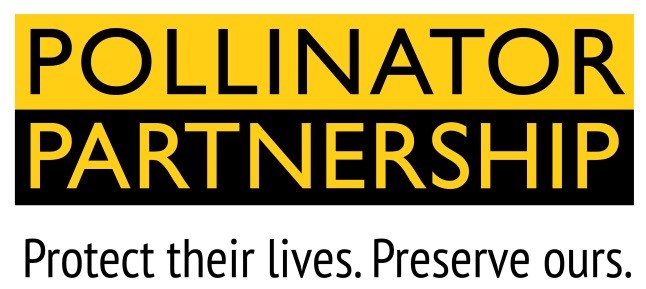What’s Killing most of the Bees? Probably the Varroa Mite
From: JonPeters.com
Leave a Comment January 31, 2017
From: JonPeters.com
Leave a Comment January 31, 2017
From: Bee Culture

The North American Pollinator Protection Campaign (NAPPC) is seeking proposals for research related to improving the health of honey bees. Proposals should focus on research to manage, suppress, and eradicate Varroa mites, small hive beetles, and other pests, pathogens, and diseases contributing to colony losses. Summaries of previously funded projects can be found at http://pollinator.org/honeybee_health.htm. Review and selection of proposals will be conducted by members of the Honey Bee Health Task Force.
Leave a Comment January 30, 2017
Editor’s Note: Translated from the Portuguese via Google Translate.
From: Successful Farming [Brazil]
***
1 – Varroa mite
The biggest threat is the Varroa mite. Its scientific name is Varroa destructor and it can eliminate a hive in 18 to 24 months. The Varroa mite is an external parasite that attacks adults and their developing litter. It feeds on the bee’s blood, weakens it and also transmits bacteria and viruses. It’s like having a five-pound weight on your back, sucking your blood. “If I had a magic wand and could end a plague, this would be the Varroa mite,” says Reed Johnson, an assistant professor in the entomology department at Ohio State University.
Leave a Comment January 27, 2017
From: Faquier Times
Six years ago, Diane Graves decided to expand her Catlett-based farm business at her 180-acre Moonraker Stable. She boards horses, nurtures fruit trees and grows vegetables and, she said, “I wanted to do something to pollinate the fruit trees.”
***
But it’s not all pretty flowers, beguiling bees and gooey, sweet honey in this aspect of agriculture. A varmint lurks and wreaks havoc on the hives. It’s called the Varroa destructor, a blood-sucking mite that carries a lethal virus. “It was first identified in 1987 in Wisconsin,” Graves said, adding it eventually found its way here. “It’s the worst parasite to have.”
Leave a Comment January 26, 2017
From: Bee Culture
By: Jay Evans
Leave a Comment January 25, 2017
From: Genetic Literacy Project
The European Union’s ban of three neonicotinoid insecticides (aimed at saving honeybees) was developed as a logical consequence of the European Food Safety Authority’s draft bee guidance document. This document, which introduced new guidelines for what could be considered as acceptable bee research field trial, set standards that, in my opinion, were so high that none of the existing bee field research could be accepted into the risk assessment process nor would any future trials ever meet the standards. In an exchange between myself and EFSA, it appears to me that the EU Authority was deceived into accepting the 2013 document under the following assumptions:
Leave a Comment January 24, 2017
From: Nursery Management
Best management practices (BMPs) are intended to inform the horticulture industry about how to minimize negative impacts on the environment.
Washington, D.C. and Columbus, Ohio — January 19, 2017 — The Horticultural Research Institute, the research foundation of AmericanHort, is pleased to announce the release of Best Management Practices (BMPs) for Bee Health in the Horticultural Industry.
BMPs are intended to inform horticultural professionals about the green industry’s impact on bee health. Through the use of BMP guidelines, horticulture can continue to play an important role in pollinator health.
Leave a Comment January 23, 2017
From: The Country
***
One of the co-authors of the study, Lincoln University Professor Stephen Wratten, from the Bio-Protection Research Centre, said it was well known that a global decline in insect pollinator populations posed a major threat to food and nutritional security.
“We’ve lost most of our wild bees in New Zealand to varroa mite, and cultivated bees are becoming resistant to varroa pesticides. Functioning beehives are becoming increasingly expensive for farmers to rent,” he said.
Leave a Comment January 20, 2017
From: Beesource
By: awebber96
So I am no biologist, just a beekeeper, but I have been reading about the (relatively) new gene editing technology known as CRISPR. It seems that we may be on the verge of a genetics revolution that we’re just starting to understand.
Below is a link that discusses current plans to use CRISPR to eliminate Lyme disease on Nantucket Island. https://www.nytimes.com/2016/06/08/s…nantucket.html
It occurs to me that this could be the silver bullet that might also be the answer to varroa.
Leave a Comment January 19, 2017
Editor’s Note: Europe’s ban on neonicotinoid seed treatments is an environmental catastrophe that harms the globe.
From: Farmers Weekly
The study, published by the EU’s Humboldt Forum for Food and Agriculture research consultancy, shows the ban has also shortened EU agricultural supply of OSR by 912,000t (-4%).
This production has been taken up in other parts of the world, such as the Americas, Ukraine and Australia where neonicotinoids banned in the UK and the EU remain widely used.
Leave a Comment January 18, 2017